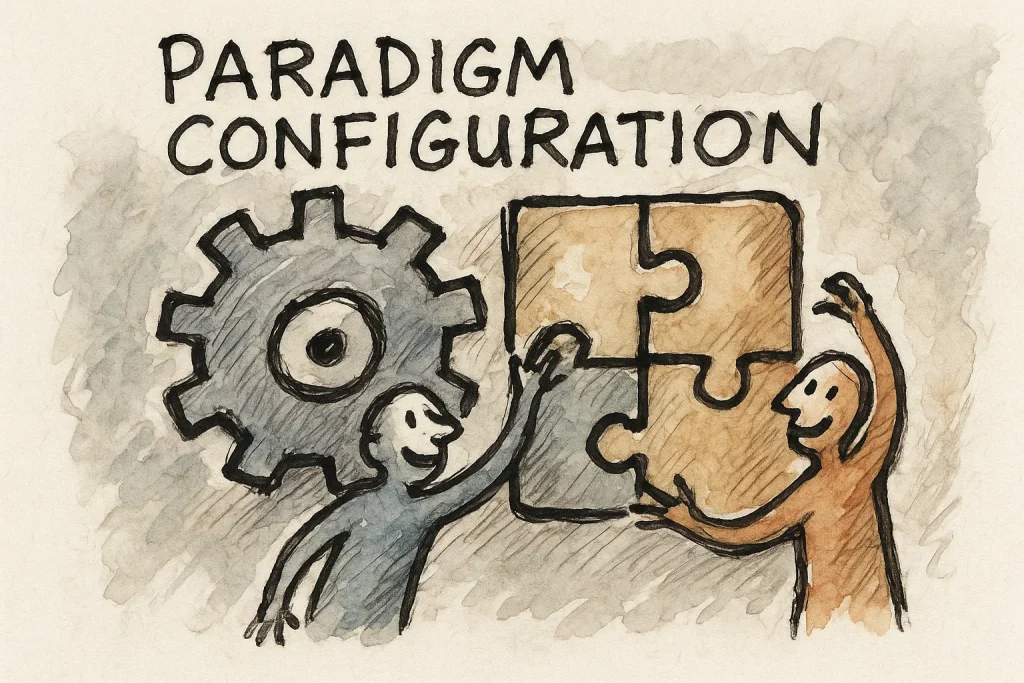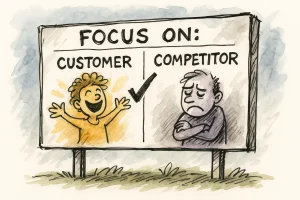
Everyone operates with “factory settings” in their minds. These are invisible rules that guide decisions without us even noticing: discounts sell more, long meetings show commitment, to grow you must hire, more hours mean more output. These assumptions form your paradigm. When aligned with reality, they help. When outdated, they become a brake – you work hard, but the effort pushes in the wrong direction.
What it means to “configure” a paradigm
Think about your phone: it has brightness, sound, and notification settings. Your mind and your business also have settings. “Configuring” means identifying the rules you’ve been following automatically and choosing new ones that better fit what you want to achieve now.
Signs your settings are outdated
- You work more but results don’t improve.
- The team meets a lot but decides little.
- Prices attract, but little profit remains at month’s end.
- You follow industry norms, but customers don’t return.
- The same problems keep appearing despite different “solutions.”
How to reconfigure (without complicating things)
- Name your rules: Write five sentences that guide your decisions. Examples: “discounts close deals,” “posting daily drives sales,” “fulfilling every request pleases the client.”
- Test the opposite for 14 days: If the rule is “discounts close deals,” test value with clear delivery and no discount with a small group. If the rule is “everyone in every meeting,” test written decisions with deadlines and accountability.
- Change the question: Swap “how do I sell more?” for “how do I get the client to come back?” Swap “how do I gain followers?” for “how do I increase clicks that convert to purchases?” Better questions lead to better choices.
- Change the measurement: Track what really matters: repeat purchases, deadlines met, profit per order, satisfaction after 7 days. Different metrics change behavior.
- Adjust the environment: If the team is scattered, reduce notifications, shorten meetings to 25 minutes, limit active tasks to three per person. Many “failures” are noise, not lack of effort.
- Learn from the client, not the echo: Ask two simple questions after each delivery: “what truly helped?” and “what got in the way?” Use the answers to refine processes.
- Create new explicit rules: Examples: “proposal within 24 hours,” “reply to clients within 1 business day,” “1-page brief,” “add new product only when the top 10 are standardized.”
Practical examples
- Pricing: “cheap sells more” → reconfiguration: “price that sustains + clear promise + helpful detail.” Common result: less rush, higher margin, loyal client.
- Team: “everyone in every meeting” → “short meeting with agenda and written decision.” Less idle time, more delivery.
- Marketing: “post every day” → “biweekly campaigns with clear offer and conversion tracking.” Less noise, more sales.
- Customer service: “say yes to everything” → “say yes with conditions and scope guidelines.” Less rework, more trust.
A 7-day roadmap
- Day 1: list five rules you follow automatically.
- Day 2: choose one to challenge.
- Day 3: define a 14-day test with a simple metric (e.g., deadlines met, repeat purchase rate, profit per order).
- Day 4: adjust the environment (checklist, deadlines, accountability).
- Day 5: collect two customer feedbacks.
- Day 6: remove one step that doesn’t add value.
- Day 7: record what changed and decide whether to keep the new configuration.
Closing thoughts
Paradigms save energy, but only work as long as they deliver results. The world changes; your settings must change too. This isn’t about “thinking positive”- it’s about making automatic behaviors visible, testing small alternatives, and adopting what improves the client’s experience and your results. Choose one rule to review today. In a few weeks, you’ll notice: the right configuration matters more than extra effort.
That’s it.





